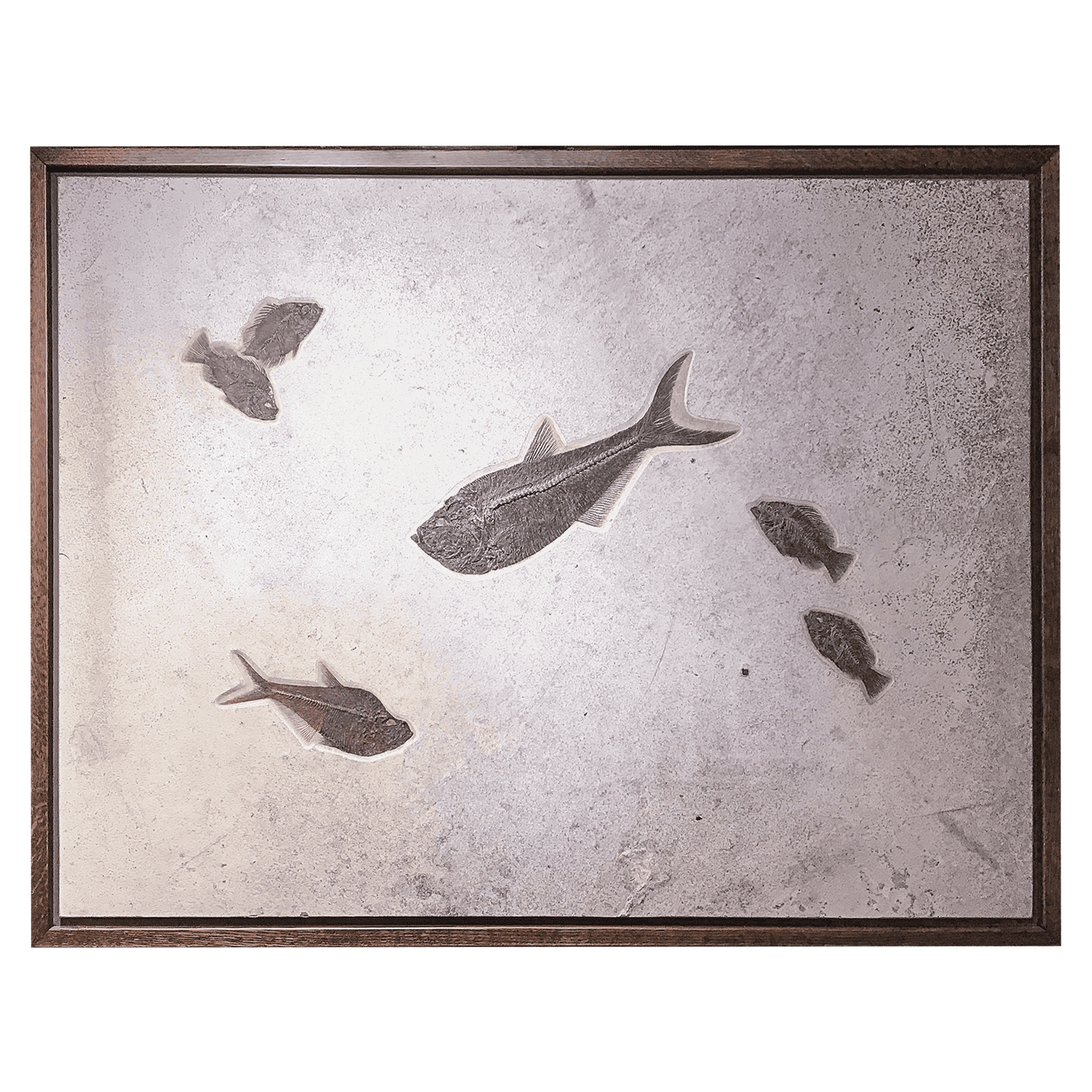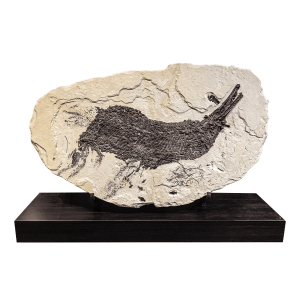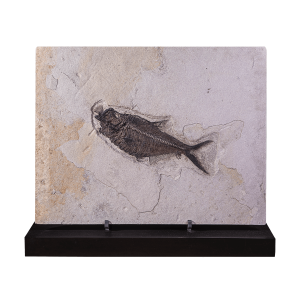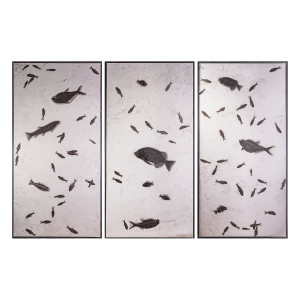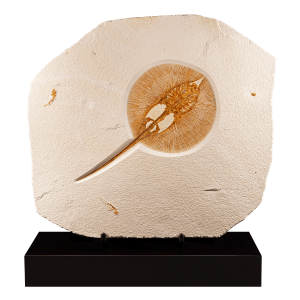Fossil Fishes Mural
This fossil fishes mural presents six perfectly preserved fish that appear to swim through the ancient waters of a prehistoric lake. Their original chocolate-brown tones contrast beautifully against a matrix of cream and grey, enhanced by natural iron deposits.
Discovered in the renowned Green River Formation in Wyoming, this mural reflects the area’s rich fossil history. The fish range in size from six to 17 inches long and include a pair of Diplomystus – an extinct herring – gliding between two pairs of Priscacara, an extinct type of perch.
Each detail has been carefully revealed by skilled hands. The delicate fins, ribs, and vertebrae remain intact, offering a rare level of clarity and preservation. Set within a custom walnut frame, the piece blends science and style, turning an ancient scene into a timeless work of art.
As the Rocky Mountains formed, vast lakes spread across what is now Wyoming. These lakes became fossil beds over millions of years, preserving fish, insects, and plants in fine limestone and shale. Today, the Green River Formation stands as one of the world’s most important fossil sites.
Whether displayed in a home, office, or gallery, this fossil fishes mural brings prehistoric life into modern interiors. It invites viewers to explore Earth’s distant past through a beautiful and tangible piece of natural history.
Private negotiation
Details
| Specimen | Diplomystus sp. – Priscacara sp. |
|---|---|
| Geological Period | Eocene |
| Age | 55 Million Years Old |
| Origin | Green River Formation – Wyoming (USA) |
| Dimensions | L 50 x D 3 x H 38 in (L 127 x D 8 x H 96 cm) |
| Weight | 66 lb (30 kg) |
Diplomystus are one of the most common genera across the Green River Formation. The large fish likely swam alone, and its morphology and shape of the mouth suggest it hunted near the water’s surface. Due to its thin scales, they are rarely well preserved and must be prepared by the most skillful restoration artists.
Priscacara are distinguished from other Green River fish by their disc shape and have not been identified outside of the Eocene geologic period. A smaller fish that sometimes grew up to 16 inches long, it was believed to swim in schools feeding on gastropods and crustaceans. They evolved spines, thought to defend against predators like the Diplomystus
Related Articles
Please contact us at Geoworld USA
Phone : +1 520 884 4867
Mail : gallery@geoworldusa.com

